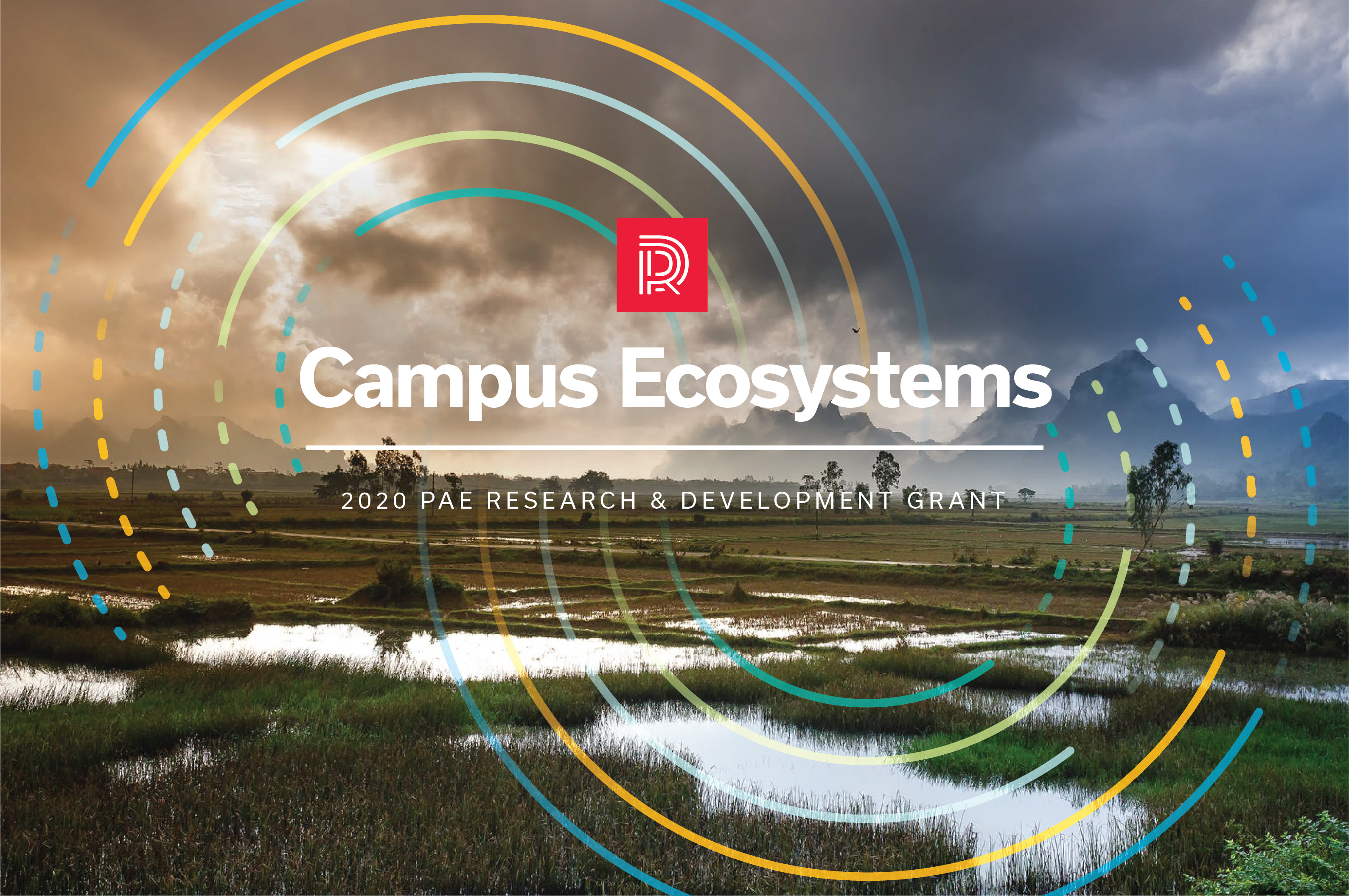Winning grant team makes strides on campus-emissions project
PAE’s Research & Development Grant is awarded annually to two teams with innovative ideas for solving the world’s water and energy challenges. Here’s a look at one team’s journey so far.
Electrical engineer Karina Hershberg had the seed of an idea.
“I had about 10 percent of an idea, then I went out to talk to people,” says Hershberg, an associate at PAE. “Together we formed 60 percent of an idea and wrote the grant proposal. Now we’re working out the other 40 percent. This is what makes PAE’s R&D program so important. It gives you the space to take a kernel of an idea and bring it to 100 percent.”
Hershberg is leading one of the two teams awarded PAE’s $25,000 Research & Development Grant in 2019. In collaboration with the University of Oregon, Hershberg and team are looking at campus emissions to develop a framework for reduction that can be applied to other facilities of similar scale.
The Campus Ecosystems Emissions Analysis team — Hershberg, along with Craig Lardiere, Rachel Wrublik, Jess Scanlon, Paula Hopker, David Mead, Justin Stenkamp, and Marc Brune — hit the ground running immediately after being awarded the grant late last summer.

“We are deep in the weeds right now,” says Hershberg. “I don't know entirely where our destination is or how long it'll take us to get there, but it’s been a delightful journey.”
The team has been working with the University of Oregon’s Energy Studies in Buildings Laboratory and its Office of Sustainability to evolve the school’s accounting of energy use. Currently, the university uses an industry-standard methodology that predominately looks at campus totals for fossil-fuel emissions, electricity, transportation, and materials.
“We’re trying to help expand that lens by looking for interactions between those systems,” says Hershberg. “As we peeled back the layers, we realized that there is a lot more to look at. It’s a complex issue.”

To help unravel the complexity, the team broke the project into two phases — establishing a baseline and modeling solutions. Determining a baseline for the university’s energy and water use involved looking at existing protocols to identify gaps. The team considered everything from on-campus building materials and transportation to hotdogs and chips at football games.
“First, we wanted to improve the accuracy of the emissions accounting they’re already doing,” says Hershberg. “Next, we developed a framework for analyzing campus-planning decisions within a larger context — in a way that considers not only the negative impacts but also the solutions available to minimize or offset those impacts.”
It’s still too early to report any data, but the team is well underway on phase two of the project. They are wrapping up the framework development and moving onto creating a case study of a campus-planning decision.
“We’re about to start putting numbers to this,” says Hershberg. “We’re excited to see how our framework holds up when we apply it to a real case study.”
The goal is to eventually take the framework beyond university campuses and use it for PAE projects of a similar scale. That could include commercial offices and healthcare facilities.

“I already have my sights set on some projects in the office that I would love to apply this to,” says Hershberg. “It has been a very interesting and fun thought exercise, but it was always intended to be more than just a thought exercise.”
In addition to providing real-world inspiration, the work being done on the campus-emissions project has been a reminder of what’s possible in the sustainability space.
“This project has given me renewed optimism about the solutions available to us,” says Hershberg. “In this day and age of bad news, it’s been a good reminder to take a step back and think a little bigger. There are so many untapped opportunities to do things better.”




